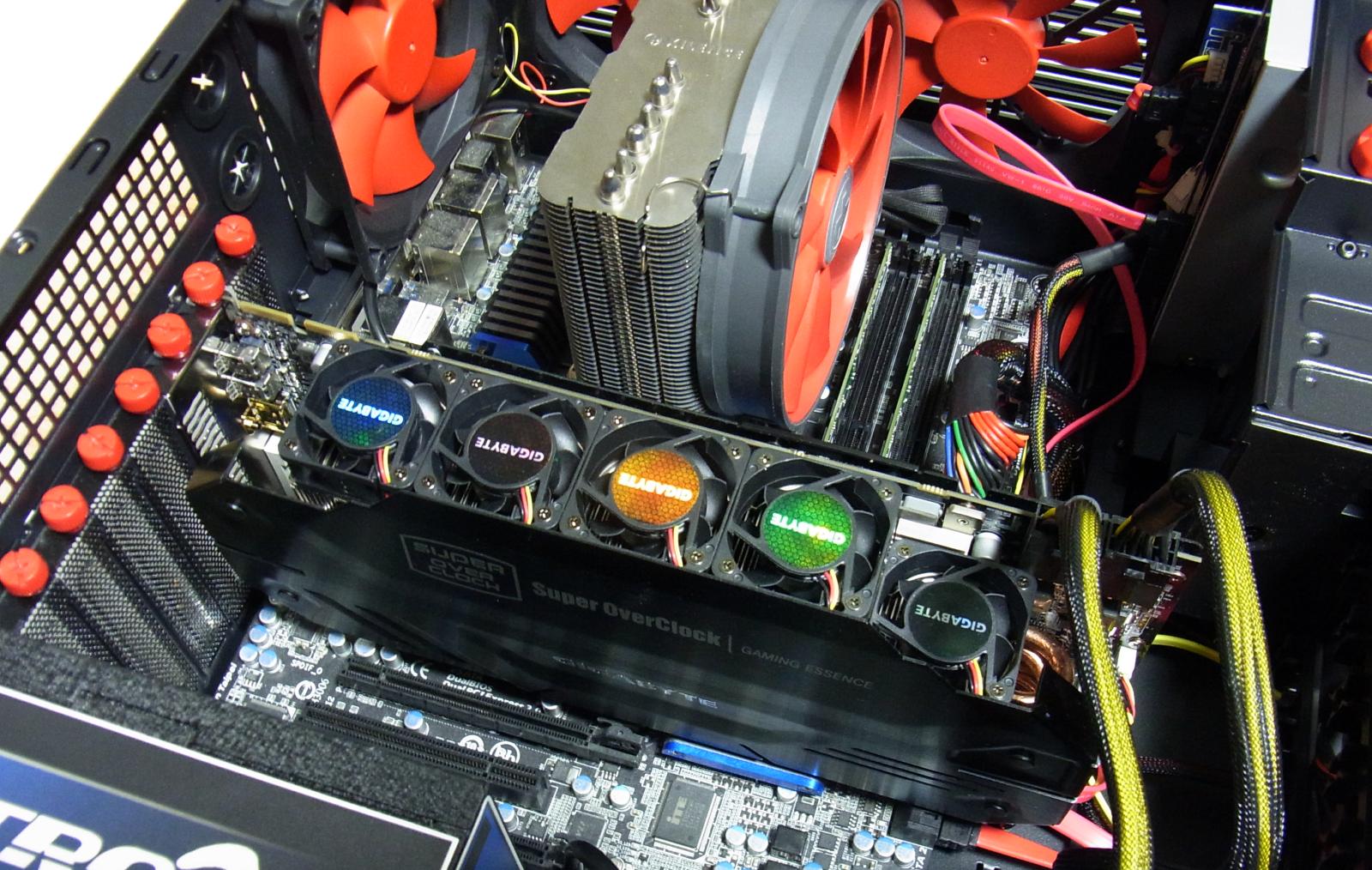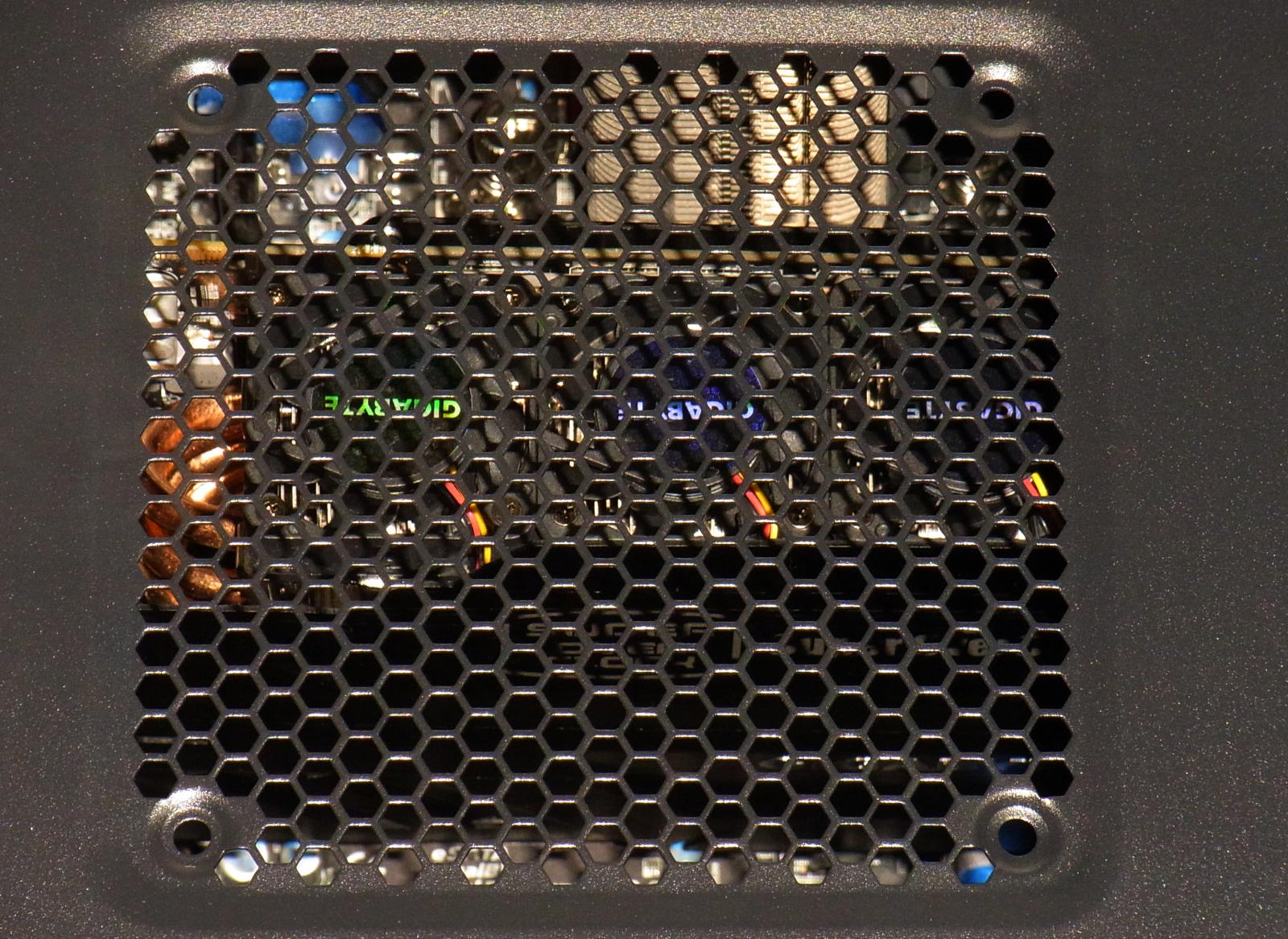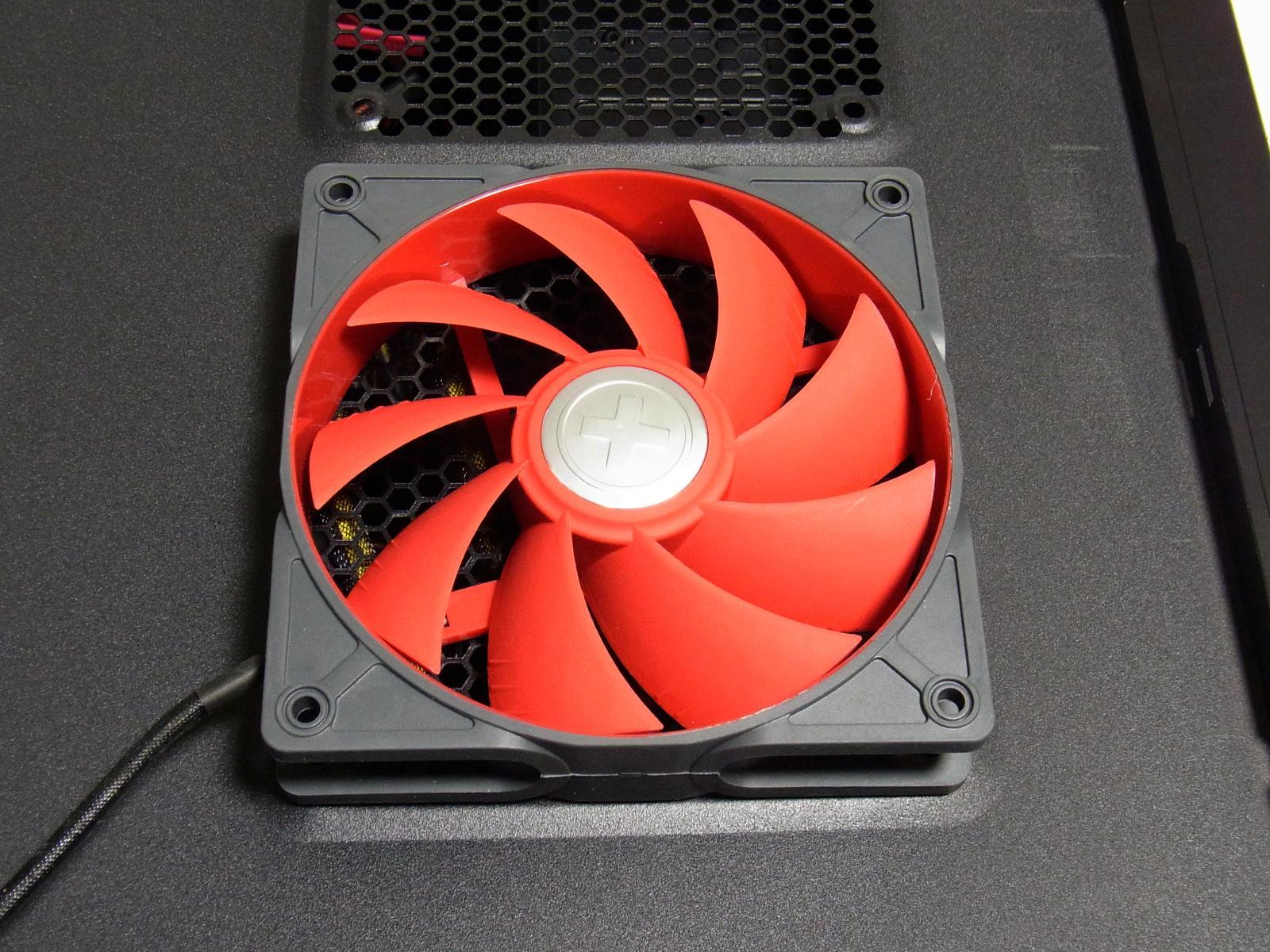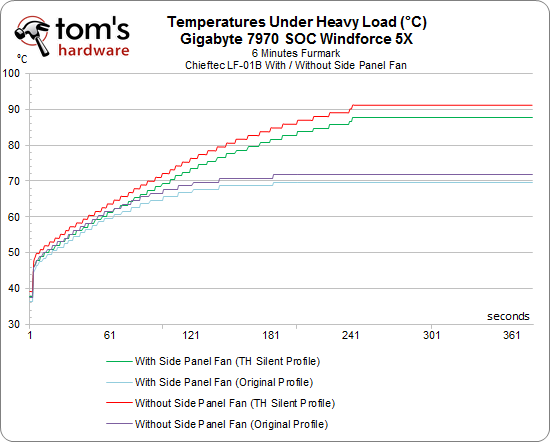Gigabyte Radeon HD 7970 Super Overclock: Now With Windforce 5X
Gigabyte’s Radeon HD 7970 Super Overclock is huge, heavy, overclocked, and very different-looking. Its Windforce 5X cooler employs five 40 mm fans. We benchmark the card, spend some time tweaking it, and measure the noise those blowers make.
Operation In A Closed Case
We use a mid-sized Chieftec LF-01B chassis for our closed-case temperature benchmarks. We wanted a smaller enclosure, which should amplify potential heat problems caused by Gigabyte's card. We benchmarked with and without the case fan, but always left the CPU fan running.
| Gigabyte Radeon HD 7970 Super Overclock | |
|---|---|
| Processor | Core i7-2600K (Sandy Bridge), 32 nm, 8 MB Shared L3 Cache, Overclocked to 4.5 GHz |
| Cooler | Deepcool Gammax 400 |
| Memory | 2 x 4 GB Kingston Value DDR3-1333 |
| Mother Board | Gigabyte Z68X-UD5-B3 |
| Case | Chieftec LF-01B |
| Power Supply | Chieftec Nitro 2 550 Watt |
| Front Case Fan | 800 RPM (Low-Voltage) |
| Top Case Fan | Not Active |
| Back Case Fan | 800 RPM (Low-Voltage) |
| Optional Side Case Fan | 1. Measured without Fan2. Measured with Fan |
| Operating System and Driver | Windows 7 Ultimate x64Catalyst 12.6 WHQL |
| Test Software | FurMark, OCCT |
First, we benchmarked without case's side fan in place. We didn’t see any impact on CPU temperature, though temperatures inside the chassis increased very slowly. Within the first 30 minutes, the side of the case (with its two small 120 mm openings) got quite warm.
We applied 7 V to a small, quiet case fan, and that was enough to keep the side of the chassis cooler (it sat at 35 degrees Celsius after 30 minutes). The interior case temperature increased by six degrees Celsius from our 22 degrees Celsius room temperature to 28 degrees.
Not only is this acceptable, but it's comparable to coolers employing direct heat exhaust. The only caveat is that, of course, you need a chassis with ventilation on the side. Something like Enermax's Fulmo GT, with its huge side opening, would be ideal, even without a side fan.
Once again, the video shows Gigabyte's Radeon HD 7970 Super Overclock under the full load of FurMark. The noise level is a little lower in the closed case, side opening or not.
The case doesn’t manage to reduce the noise level by much, but at least it changes its tone a bit to sound deeper. The cooling implementation works really well at these noise levels, making overclocking a breeze.
Get Tom's Hardware's best news and in-depth reviews, straight to your inbox.
Current page: Operation In A Closed Case
Prev Page Overclocking And Performance Next Page A Cool Radeon HD 7970 That You Can't Buy
Igor Wallossek wrote a wide variety of hardware articles for Tom's Hardware, with a strong focus on technical analysis and in-depth reviews. His contributions have spanned a broad spectrum of PC components, including GPUs, CPUs, workstations, and PC builds. His insightful articles provide readers with detailed knowledge to make informed decisions in the ever-evolving tech landscape
-
unksol While the cooler is an interesting concept, and the cards components are solid build quality and attention to detail seem to be severely lacking. The cooler isn't even designed for this board. Loose screws? thermal pads and TIM you have to scrape off/replace and void your warranty? And on a review sample of all things. I can't imagine one off the line would improve that situation...Reply
And while good on Toms for reporting it why isnt the card tested as it comes from the factory so we know what to actually expect... -
I will surely like to have that Gigabyte HD 7970 Super Overclock graphics card and be the only one in the US to claim so.Reply
-
amuffin The Gigabyte SOC Cards were always on of the most intriguing series out there of GPU's!Reply -
jase240 I like the idea of this card, but really that thing is LOUD. I have an Asus GTX 670 Direct CUII TOP and its silent even at load its barely audible. Personally I think if someone is going to overclock to the extent that they need a card that keeps the ambient temps to be low, they will probably be liquid cooling their CPU with a radiator at the top of their case(that's what I'm doing).Reply
Honestly though if this card could be a little quieter it would be a great standard considering most people do still overclock with air coolers, and one thing bad for air coolers is a hot GPU blowing air towards the CPU. -
goodguy713 To be honest i think its a pretty sexy card.. loud yea.. but still a sweet card.. ill keep my fingers crossed..Reply -
gsxrme Water cooling is truly the only option for really overclocking. Those fans are way to noisy. I wish toms had a 1300Mhz GTX680 listed because my factory ASUS reference board even hits 1300Mhz Core / 6750Mhz Ram with no mods or voltage tweaks. I don't see this as a breakthrough and with the cost of 2500 res monitors less than 1% of the market are running that high.Reply -
nforce4max This card isn't meant for the chickens that want cards to mostly silent but is for those who are much more aggressive in overclocking while being more forgiving when it comes to noise. This card isn't that loud compared to some rack mounted servers, I think that you guys could have pushed it further (why not) despite the power consumption. I like the build quality despite the R10 rated inductors that are driving the memory and gpu Q_Q As for the cooler I wonder if the heat pips only make contact with the vapor chamber or actually part of it? It isn't hard to design a good cooler but will cost more to produce.Reply
A lot of noise is a lot cheaper than going liquid cooling and as hot as it gets where I live you Need a really good cooling solution.



